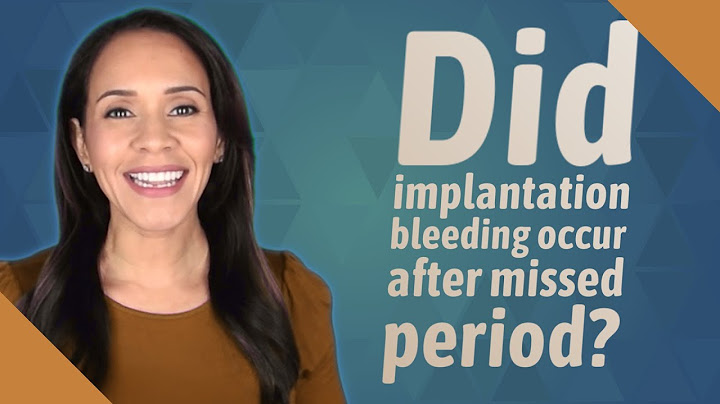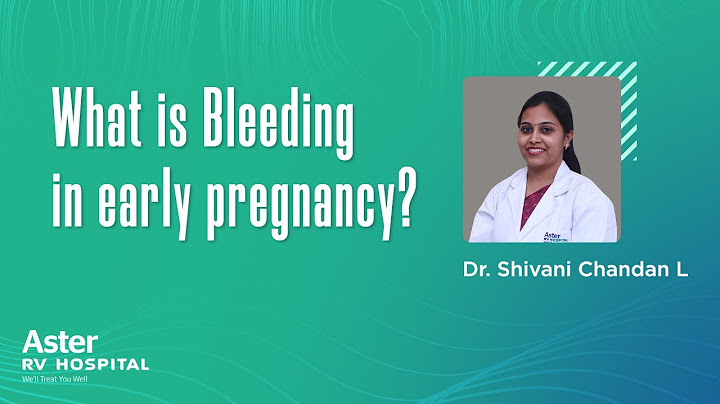You may have heard of spotting or have experienced bleeding between periods yourself and wondered why it happens, and if it’s normal. Here at Natural Cycles, we’re going to walk you through the differences between periods and spotting, the causes of spotting and why tracking your menstrual cycle can unlock hidden knowledge about your fertility. Show
Spotting vs periodThere are some key differences between spotting and menstrual bleeding. Of course, all our menstrual cycles are different, but below we’ve outlined the main differences when it comes to spotting vs period. Menstrual BleedingRegular menstrual cycle length is considered to be between 21 and 35 days in length. During each cycle, the lining of the uterus becomes thick as a woman’s body prepares for pregnancy. If that doesn’t happen, then the uterus sheds its lining, causing a period and the start of a new menstrual cycle. How to identify menstrual bleeding:
SpottingSpotting is often a normal part of a healthy menstrual cycle. There are many reasons for spotting to happen, for many of us it’s a routine part of any cycle, for others, it might be an indication of something more serious. How to identify spotting:
Withdrawal bleedingWithdrawal bleeds occur around the time of your period but are much lighter. This is still the lining of the uterus shedding, but due to an imbalance of hormones, it doesn’t happen quite the same as with a period. Withdrawal bleeding can also be a symptom of an anovulatory cycle – meaning ovulation didn’t happen in that particular cycle. What is spotting in pregnancy?Spotting during pregnancy can be quite common. While it doesn’t always mean something might be wrong, it also shouldn’t be ignored. In early pregnancy, there is often light bleeding around the time you might usually get your period – this is known as implantation bleeding. If you experience bleeding in the first 12 weeks – vaginal spotting can be an indication of miscarriage or ectopic pregnancy (when the fetus forms in the fallopian tubes) and, so it’s important you consult your gynecologist if you experience spotting or have concerns. Many women do experience spotting in the first 12 weeks and go on to have healthy pregnancies. Later in pregnancy, spotting can occur for several reasons. Changes in the cervix can cause bleeding and might be noticeable after sex. Vaginal infections can also cause spotting and a midwife or doctor can help prescribe treatment. There is also something called ‘a show’ which is when mucus which has been in the cervix during pregnancy comes away, signaling that labor is about to begin. This can happen in the days leading up to contractions starting, or during labor. Menopausal spottingSpotting around the time of menopause is fairly common. This also is due to the changes in hormone levels that regulate the cycle. Because of the disruption of hormones, you may experience bleeding at different times in your cycle and the amount of bleeding may vary as well. If you experience very heavy and/or lengthy bleeding during menopause you should speak to your doctor, the same goes for bleeding between periods. Any bleeding that happens after menopause should be discussed with a healthcare professional. Spotting after sexThere are lots of reasons for women to bleed after sex. Spotting after sex can be a sign of infections, an inflammation, or polyps (non-cancerous growths in the uterine lining), as well as other conditions. Vaginal dryness can also cause bleeding after sex – lubrication can help with this and reduce spotting after sex. Bleeding can also occur after damage to the vagina which can happen from sex, or in childbirth. While spotting can be a perfectly healthy part of the menstrual cycle, we recommend that you talk to a healthcare professional about any unexplained bleeding between periods. Regular cervical screening is also a good way to help make sure spotting is not a symptom of anything more serious. Tracking your cycleIf you keep track of the patterns in your menstrual cycle you are more likely to notice both consistencies and changes in your routine. This includes bleeding between periods, anovulatory cycles, PMS symptoms and so much more. Thousands of women use Natural Cycles to prevent or plan pregnancy, with the welcome side effect of learning more about their bodies along the way.   Take our quiz to see if Natural Cycles is for youTake the quiz 4.8 30k App Store ratings Did you enjoy reading this article? 👍👎Start my journey How does it work?  Written By Jennifer Gray A writer with a passion for women’s health, Jennifer Gray has years of experience writing about various reproductive health topics including birth control, planning pregnancy, women’s anatomy, and so much more.  Scientifically Reviewed Jack Pearson Dr. Jack Pearson is Natural Cycles’ in-house medical expert. With 10+ years of experience working in the field of fertility, he dedicates the majority of his time to conducting groundbreaking research within the field of women's health. How do I know if it's spotting or my period?The biggest difference between spotting and your period is the amount of blood. A period can last for several days and require a tampon or pad to control your flow. However, spotting produces much less blood and doesn't typically require the use of these products.
Why am I spotting instead of getting my period?You may experience spotting instead of a period for a number of reasons, including pregnancy, menopause, ovulation, stress, and polycystic ovary syndrome (PCOS). Other medical conditions, trauma, smoking, and taking birth control pills can also cause spotting. Spotting is not like menstrual flow.
Can pregnancy spotting look like a period?A: Unfortunately, there's no way to tell the difference between implantation bleeding and menstrual bleeding. Implantation occurs 6-12 days after conception, which is around the same time you may be expecting your monthly period, and both can produce the same amount of bleeding.
How many days of spotting is considered a period?Generally, if you have light bleeding that occurs within two days of your period, you should consider that part of your period, not spotting (2). However, if it's very, very light—like you only see a little on your toilet paper—that probably could be considered spotting.
|

Related Posts
Advertising
LATEST NEWS
Advertising
Populer
Advertising
About

Copyright © 2024 pauex Inc.















